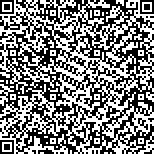| 引用本文: | 何杰,王绪杰,余方平,许文军,王庚申,谢建军,汪玮,施慧.自切附肢对三疣梭子蟹(Portunus trituberculatus)幼蟹存活、生长和能量收支的影响.海洋与湖沼,2018,49(1):207-213. |
| |
|
| 本文已被:浏览 2087次 下载 2215次 |

码上扫一扫! |
|
|
| 自切附肢对三疣梭子蟹(Portunus trituberculatus)幼蟹存活、生长和能量收支的影响 |
|
何杰1,2, 王绪杰1,2, 余方平1, 许文军2, 王庚申1, 谢建军1, 汪玮1,2, 施慧1
|
|
1.浙江省海洋水产研究所 浙江省海水增养殖重点实验室 舟山 316021;2.浙江海洋大学 舟山 316022
|
|
| 摘要: |
| 三疣梭子蟹池塘高密度养殖过程中,种内相残所致的自切附肢现象极其严重,但迄今为止,有关自切附肢对三疣梭子蟹(Portunus trituberculatus)生理生态的影响仍处于空白阶段。本文重点研究了自切附肢对三疣梭子蟹幼蟹存活、蜕壳生长及能量收支的影响,结果显示:(1)自切附肢显著影响了幼蟹的成活率,整体上自切附肢数越多,成活率越低,其中自切4条(A4)和5条(A5)附肢组幼蟹的成活率仅为60%左右,显著低于对照组(93.3%)(P<0.05);(2)自切附肢缩短了幼蟹的蜕壳周期,并且自切附肢数越多,蜕壳周期越短;(3)蜕壳后幼蟹的增重率随自切附肢数增加而降低,但特定生长率随自切附肢数增加而提高;(4)自切附肢后幼蟹的摄食率略有降低,整体上与对照组的差异不显著(P>0.05),而饲料转化率有所提高,尤以A4和A5组幼蟹最为明显,其饲料转化率显著高于对照组(P<0.05);(5)自切附肢改变了幼蟹的能量分配比例,随着附肢自切数量的增加,用于呼吸的能量比例(R/C)逐渐降低,而用于生长的能量比例(G/C)逐渐升高。 |
| 关键词: 三疣梭子蟹 自切 存活 生长 能量收支 |
| DOI:10.11693/hyhz20170700198 |
| 分类号:Q958.12;S968 |
| 基金项目:浙江省科技厅计划项目,2016F50042号,2015F30003号;舟山市科技计划项目,2017C43032号;浙江海洋大学博士启动基金,22135010815号;舟山市普陀区科技计划项目,2015YN209号。 |
附件 |
|
| EFFECTS OF LIMB AUTOTOMY ON SURVIVAL, GROWTH AND ENERGY BUDGET OF JUVENILE SWIMMING CRAB PORTUNUS TRITUBERCULATUS |
|
HE Jie1,2, WANG Xu-Jie1,2, YU Fang-Ping1, XU Wen-Jun2, WANG Geng-Shen1, XIE Jian-Jun1, WANG Wei1,2, SHI Hui1
|
|
1.Marine Fisheries Research Institution of Zhejiang Province, Key Laboratory of Marine Culture and Enhancement of Zhejiang Province, Zhoushan 316021, China;2.Zhejiang Ocean University, Zhoushan 316022, China
|
| Abstract: |
| High density stocking has usually caused high limb autotomy rate among juvenile swimming crab Portunus trituberculatus. However, there was no report about the effects of autotomy on both physiology and ecology in P. trituberculatus. Therefore, we aimed at the effects of limb autotomy on the survival, growth and energy budget of the juvenile P. trituberculatus. The results showed that:the survival rate of the juvenile P. trituberculatus was significantly affected by autotomy. On the whole, the more the number of limbs autotomy, the lower the survival rate. Among them, the survival rate of juvenile P. trituberculatus with 4-5 limbs autotomized were only about 60%, which was significantly lower than that of control group (P<0.05). The molt cycle of the juvenile P. trituberculatus was shortened because of autotomy, and the more number of limbs autotomized, the shorter the molt cycle. The weight gain rate (WGR) of juvenile P. trituberculatus decreased with increasing number of the limbs autotomized, but specific growth rate (SGR) raising with the increase of the limbs autotomized. During the whole experiment, the feeding rate (FR) decreased slightly, but there was no significant difference with the control group (P>0.05). Nevertheless, the feed conversion rate (FCR) increased, especially in the A4 and A5 groups were most obvious, the feed conversion rate of them were significantly higher than control group (P<0.05). Limb autotomy changed them autotomy changed the energy distribution proportion of the juvenile P. trituberculatus, with an increase in the number of limb autotomized, the energy ratio used for breathing (R/C) gradually reduced, while the growth of energy ratio (G/C) increased. |
| Key words: Portunus trituberculatus autotomy survival growth energy budget |
